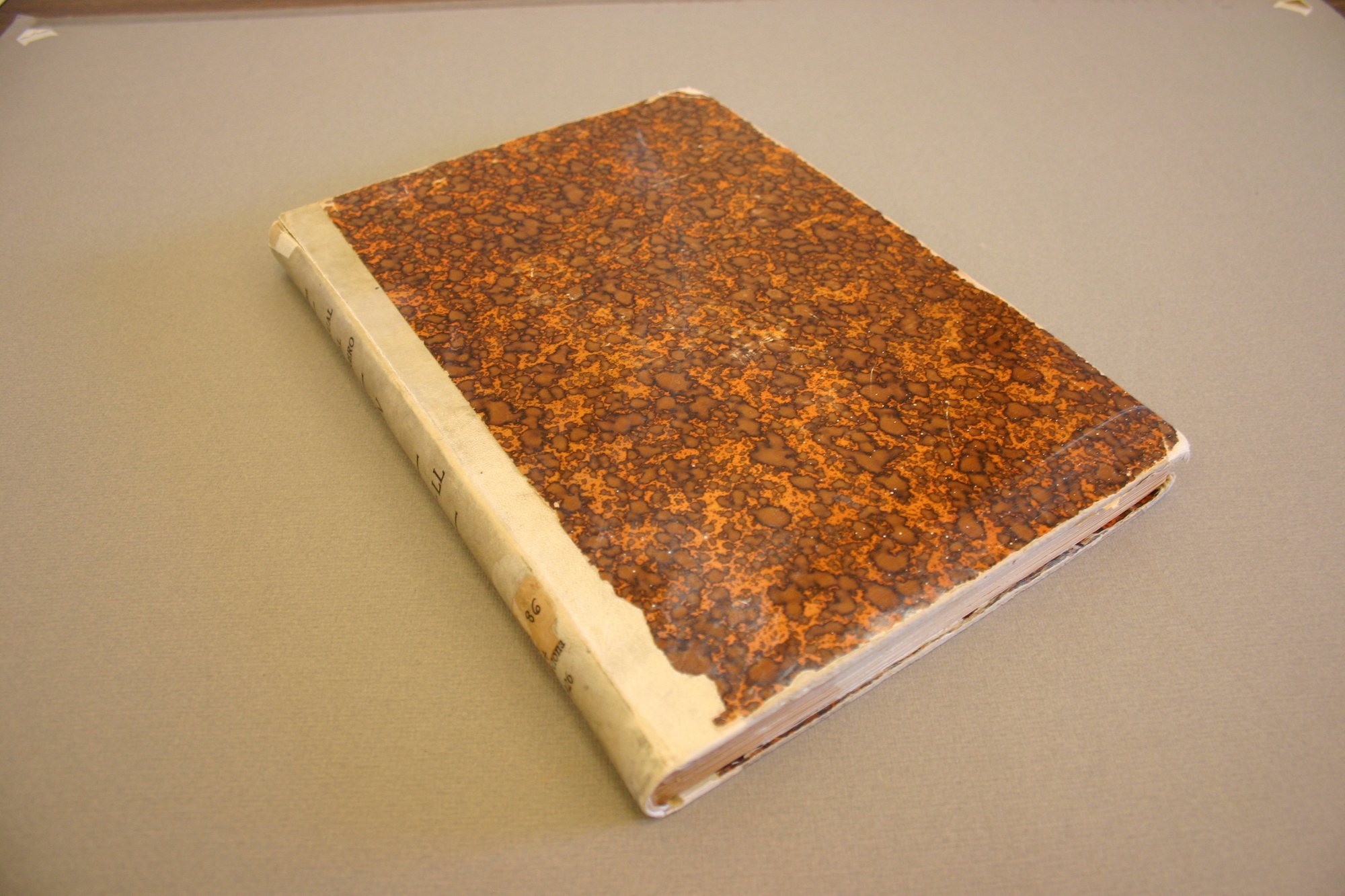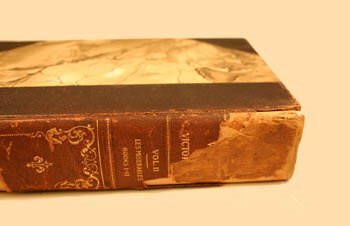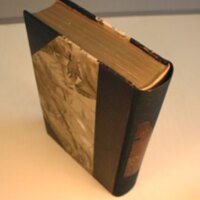Preservation Week 2021 and the Adopt-A-Book Program
Adopt-A-Book: The 1900s
Penguin Books was founded in 1935, and with it came the mass-market paperback (Banham, 2008, p. 288). According to Banham (2008), "production of the mass-market paperback relied on long print-runs and low production costs in order to remain cost effective: Penguin titles had to sell over 17,000 copies before becoming profitable" (p. 289).
By 1970, everything was automated and mechanized (Banham, 2008, p. 289), and that's still the way we get and read our books today.

University of Missouri Special Collections call number: Z2681 .P15
Donor: Margery Lindsey and Mack Lindsey
Source: https://library.missouri.edu/giving/adoptabook/
Manual del librero hispano-americano by Antonio Palau y Dulcet, published from 1923-1927.
This book had paint on it which had to be removed and new vellum was inserted under the spine.
Vellum is sometimes used to refer specifically to parchment made of calf skin or lamb skin, but its use is not very consistent. Calves and lambs, being younger, tended to produce higher quality parchment without many blemishes and so their skins were in high demand. The term “uterine vellum” is used to refer to parchment made from the skin of unborn calves or lambs. Some early books were printed on vellum rather than paper as luxury commodities. [1]

University of Missouri Special Collections call number: Special Collections Adopt a Book shelf (ELLIS)
Donor: Norma Cooper and Ben Cooper
Source: https://library.missouri.edu/giving/adoptabook/
The Works of Victor Hugo by Victor Hugo. This work is a 10-volume set, published around 1900.
Victor Hugo wrote several well known works such as Notre Dame de Paris and Les Miserables. Both works have been continually adapted; Notre Dame de Paris even received the Disney treatment when it was adapted into the well-known movie "The Hunchback of Notre Dame." Hugo's most extensive writing was produced during his exile (1851-1870) after Napoleon III came to power. Les Miserables was written during this time, in 1862. The 10-volume set offers the ability to follow Hugo's works from beginning to end, and to see the changes in subjects and writing styles. [1]
The spine was repaired with a new cloth spine, and the edges and corners were repaired. [2]
Sources:
Banham, R. (2008). The Industrialization of the Book: 1800-1970. In Rose, J., Eliot, S. & Banham, R. (Eds.), The History of the Book (1st ed., pp. 273-290). John Wiley & Sons, Ltd.
Bertrand Barrère, J. Victor Hugo: French writer.


